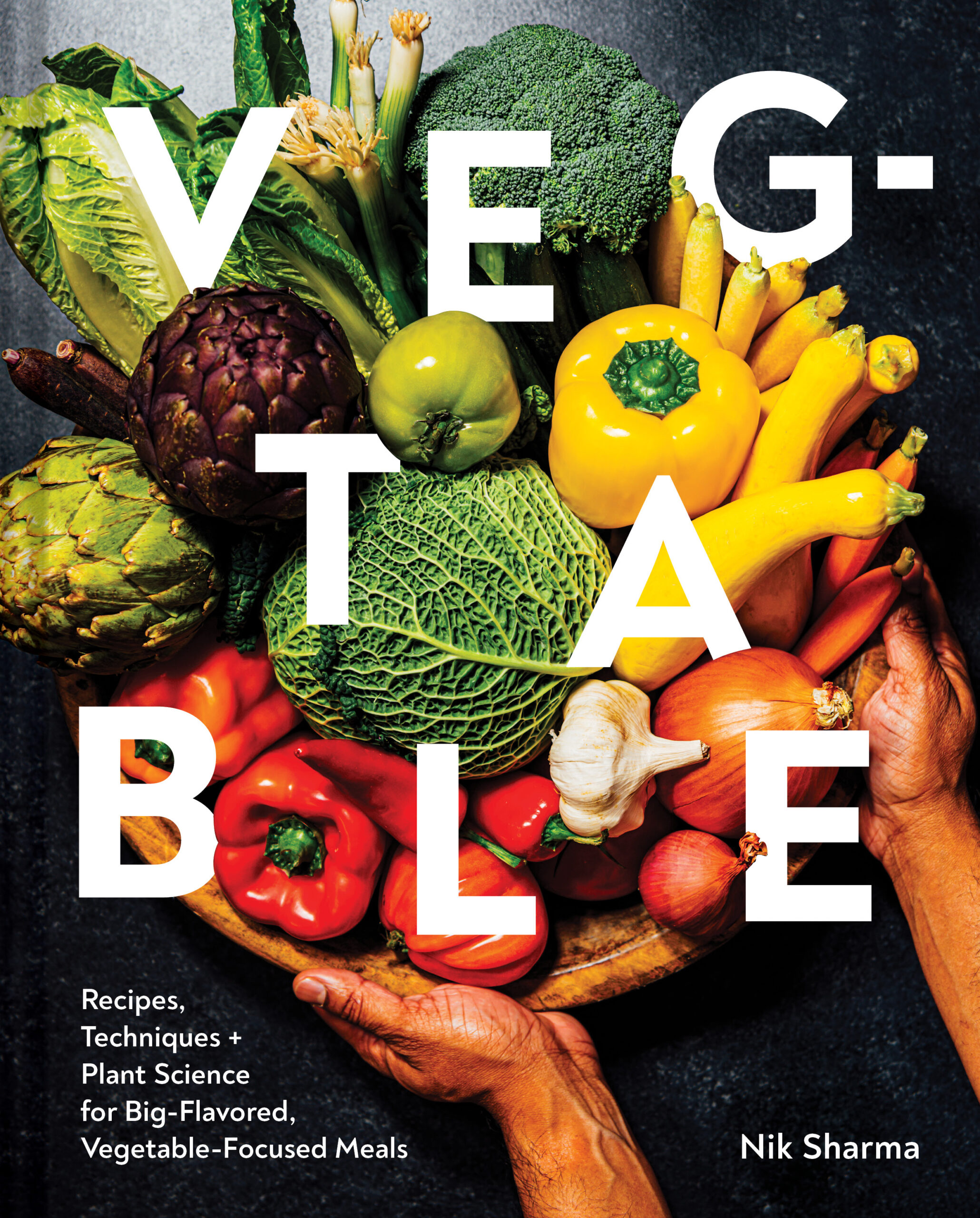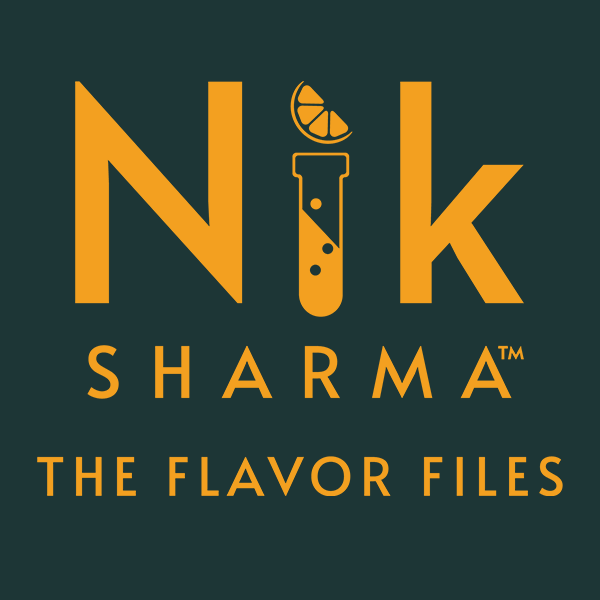This week, it’s all about the role Sight plays in The Flavor Equation, and this recipe lets you test some of those principles in your kitchen. Pay attention to the different colors and how they come together in this dish. Watch how the oil takes on the red color of the chilli; it’s a wonderful and marvelous transformation to behold. The brilliant bright sea of turmeric creates a backdrop for the roasted cauliflower, the herbs, and the rest of the ingredients in this dish.

Don’t forget to enter the GIVEAWAY to win two of my favorite cookware pieces from Staub. There’s a wonderful cast-iron roasting pan and a grill pan (which makes life easy if you want to grill but don’t own a grill or can’t go outside when the weather is bad). I use these often in my kitchen, and I’ve owned them for several years; they’re sturdy, reliable, and look beautiful.
NOTE: In my opinion, the best accompaniment to this dish is the paratha, and the Spinach, Paneer and Za’atar Parathas from the Bonus Recipe Collection work splendidly here.
Reprinted from The Flavor Equation by Nik Sharma with permission by Chronicle Books, 2020
Print
The Flavor Equation: Roasted Cauliflower and Turmeric Kefir
This recipe takes advantage of kefir (buttermilk can be substituted) for its bright acidity. I prefer to use a bottle of freshly opened kefir or buttermilk here, because as these liquids age, the lactic acid increases, which not only leaves a strong tart taste but also causes the milk proteins to curdle quickly on heating.
- Yield: 4
Ingredients
2 lb/910 g cauliflower, broken into bite-size florets
1 tsp garam masala, homemade or store-bought
4 Tbsp/60 ml grapeseed or other neutral oil
5¼ oz/150 g minced red onion
½ tsp ground turmeric
½ tsp red chilli powder (optional)
¼ cup/30 g chickpea flour
2 cups/480 ml fresh kefir or buttermilk
½ tsp cumin seeds
½ tsp black or brown mustard seeds
1 tsp red chilli flakes
2 Tbsp chopped cilantro or flat-leaf parsley
Instructions
- Preheat the oven to 400°F [204°C].
- Place the cauliflower in a roasting pan or baking dish. Sprinkle with the garam masala, season with salt, and toss to coat. Drizzle with 1 Tbsp of the oil and toss to coat evenly. Roast the cauliflower for 20 to 30 minutes, until golden brown and slightly charred. Stir the florets halfway through roasting.
- While the cauliflower is roasting, place a deep, medium saucepan or Dutch oven over medium-high heat. Add 1 Tbsp of the oil to the pan. Add the onions and sauté until they just start to turn translucent, 4 to 5 minutes. Add the turmeric and chilli powder and cook for 30 seconds. Lower the heat to low and add the chickpea flour. Cook, stirring constantly, for 2 to 3 minutes. Lower the heat to a gentle simmer and fold in the kefir, stirring constantly. Watch the liquid carefully as it cooks until it thickens slightly, 2 to 3 minutes. Fold the roasted cauliflower into the liquid and remove from the heat. Taste and add salt if necessary.
- Heat a small, dry saucepan over medium-high heat. Add the remaining 2 Tbsp of oil. Once the oil is hot, add the cumin and black mustard seeds and cook until they start to pop and the cumin starts to brown, 30 to 45 seconds. Remove from the heat and add the chilli flakes, swirling the oil in the pan until the oil turns red. Quickly pour the hot oil with the seeds over the cauliflower in the saucepan. Garnish with the chopped cilantro and serve warm with rice or parathas.
Notes
- Using the acidity of fermented dairy such as kefir and the Maillard reaction creates a bittersweet taste and new aroma molecules in vegetables.
- Chickpea flour, which contains starch, acts as a thickener for the base of the sauce.
- The sound of the seeds sizzling is a good indicator of how hot your oil is; if the oil is hot enough, they will sizzle immediately and brown quickly.
- Author: Nik Sharma



